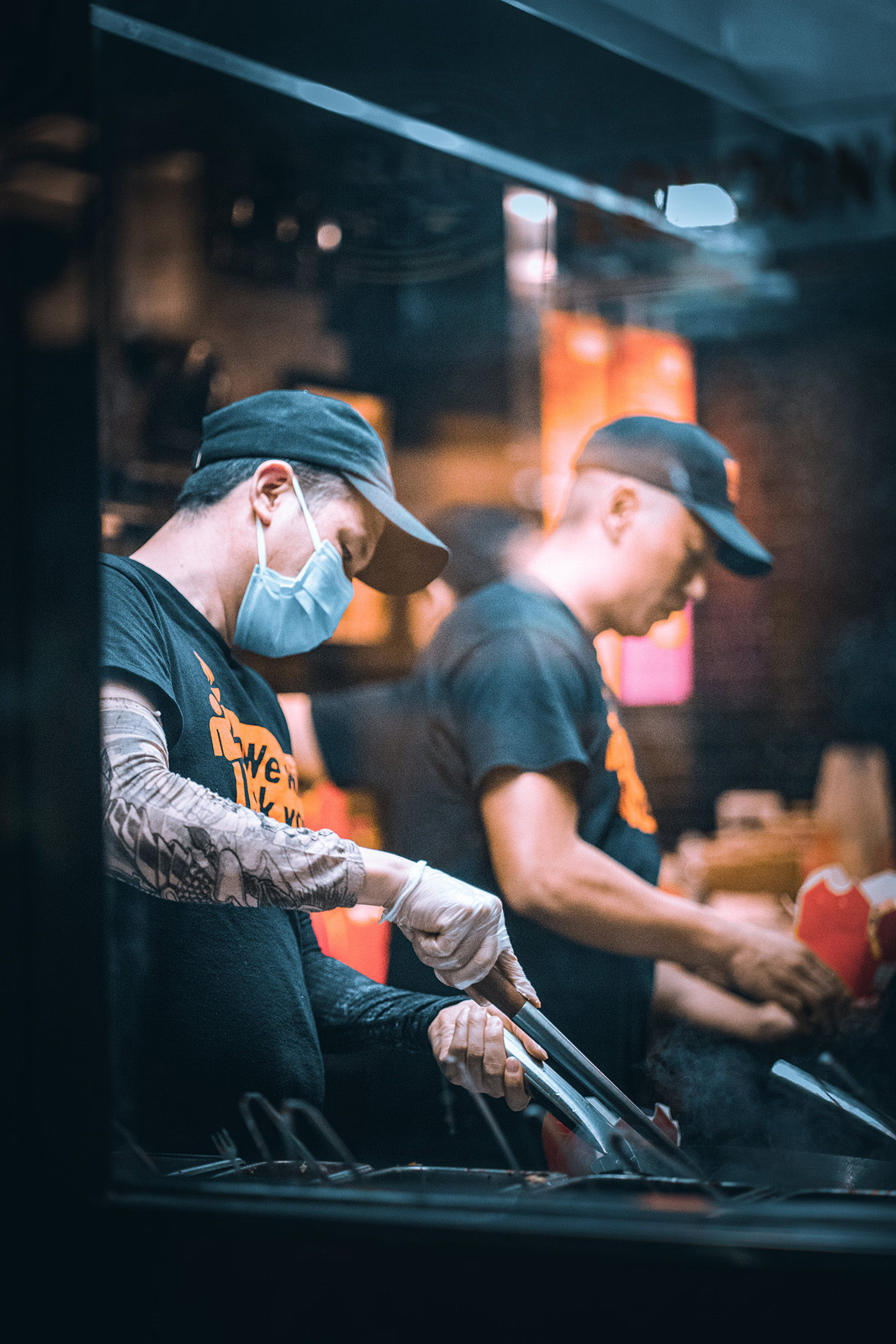In the fast-paced world of Quick Service Restaurants (QSRs), where competition is fierce and consumer expectations are ever-evolving, staying ahead is not just a matter of choice — it’s a necessity for survival. Over the past decade, the American quick service restaurant industry has witnessed a series of significant events and transformative trends that have not only shaped its landscape but have also redefined the way in which QSR businesses operate and adapt to change.
From a high-profile food contamination outbreak that sent shockwaves through the QSR industry, forcing everyone to reexamine their food safety standards and supply chain management, to the emergence of plant-based meat alternatives that have challenged traditional notions of fast-food ingredients and sustainability — the QSR sector has been subject to major disruptions and paradigm shifts. Moreover, the global pandemic of unprecedented scale has further tested the capabilities of many QSR brands in their innovation, adaptability, and resilience in the face of unforeseen challenges.
In this article, we will spotlight three strategic themes that we believe have become critically important for QSR brands to recognize as they navigate a changing landscape and adapt to evolving consumer expectations.
Unlocking Customer Insights
Earning and retaining customer loyalty in a crowded QSR landscape, full of options, is already a demanding feat. This is further exacerbated when external influences start shaping the way customers think, behave and act when making their purchasing decisions. For instance, when there is a recession and the meal that did cost $10 is now $11, due to unpredictable changes in consumer price elasticity in the QSR market, customers might rethink how often they choose that meal and explore more affordable alternatives. To create a deeper connection with customers, QSR brands must harness the power of data, staying acutely attuned to evolving trends that may influence customer behavior, and use that data to create personalized experiences that resonate on a stronger level.
“According to Technomic’s 2020 Center of the Plate: Seafood and Vegetarian Consumer Trend Report, Gen Z consumers sit ahead of the pack when it comes to routine consumption of vegetarian and vegan options, with 63 percent consuming vegetarian or vegan dishes at least once per month, and 44 percent doing so once or more a week”[1].
The new generation is increasingly attuned to the imperatives of environmental sustainability and personal well-being. Some QSR brands have successfully evolved their predominantly meat-focused menus to capture this particular segment of customers while others fell short. QSR leaders such as McDonald’s, Burger King and Del Taco, chose to embrace the risk, guided by an understanding of shifting consumer attitudes and created plant-based alternatives of their products.
Del Taco partnered with Beyond Meat in 2019 to offer plant-based meat beef tacos on their menu and it sold over 2 million units in the span of the first 2 months. In 2019, Burger King generated strong sales that summer with its Impossible Whopper introduction [2].
Conversely, McDonald’s saw underwhelming sales with their McPlant burger, launched in 2021. Despite careful testing in select U.S. locations, the McPlant’s lackluster performance could be attributed to its timing. The McPlant burger made its debut two years after the market had potentially reached a saturation point, leaving many to wonder if the Golden Arches had missed a prime opportunity. Given how plant-based meat sales have plateaued, perhaps McDonald’s would have been better served by focusing on their core product strengths and skipping the plant-based meat trend altogether.
Among the most iconic brands celebrated for its loyal customer base, Starbucks faced a big shift in consumer behavior during the pandemic, transforming the daily ritual of “I’ll grab Starbucks on my way to work” into a profound question — “Do I truly need to venture outside today?” This forced Starbucks to not only re-engage its devoted patrons but also quickly meet them where they now found themselves. Starbucks’s ability to send hyper-personalized and targeted marketing offers to their customers is powered by their “digital flywheel program, a cloud-based artificial intelligence engine that processes over 90 million transactions a week across 25,000 stores worldwide amongst 17 million mobile app users. It’s so sophisticated that the recommendations will change based on what makes the most sense according to the day’s weather, if it’s a holiday or a weekday, and what location you’re at” [3].
Recognizing the evolving lifestyle of customers, with more people embracing home comfort, Starbucks harnessed the power of data to curate a powerful lineup of products available in grocery stores, blending insights from in-store ordering behaviors with extensive industry reports on at-home consumption.
Customer preferences can fluctuate due to age, economic status, emerging trends, technological advancements, and life-changing events, all of which hold the power to significantly influence the decisions that they make. We believe that understanding and connecting with both core and adjacent customer segments is important for increasing customer lifetime value. Customers want to feel important, cared for but not inundated with constant marketing so there’s a fine line to tread.
Core Strength
It may be no surprise but having core values and a core purpose is often associated with enduring business success.
For instance, McDonald’s, seen as one of the leaders in the QSR industry, has made many changes and improvements throughout the years, their core mission of “making delicious feel-good moments easy for everyone” alongside their core values has hardly changed. Other QSR brands have weathered substantial turbulence, prompting them to reevaluate their core values or embark on a quest to rediscover their guiding star.
The 2008 recession sent Applebee’s into spiraling sales, closures and scrambling to find new ways to attract customers. In an attempt to reinvent itself and attract a new generation of customers, millennials, Applebee’s redesigned their menu to feature $20 steaks and elevated nachos. Not only did that fail to win over millennials but it also “alienated the very customers who had made Applebee’s successful in the first place: people looking for a reliable, affordable meal out” [4].
The turning point arrived in 2018 when new leadership made the strategic choice to steer Applebee’s back to its foundational roots, emphasizing affordability and steering away from excessive trendiness. The creation of the Dollarita, the $1 margarita, ignited the turnaround and became hugely successful making 2018 the best year the restaurant has had in 25 years [5]. This success was even able to reach the broader customer segment such as the Millennials who lagged behind other segments in purchasing in this category.
In the midst of the pandemic of 2020, Pizza Hut was on the verge of disappearing after their largest franchisee filed for bankruptcy until their newly appointed interim Pizza Hut U.S. President, questioned “When we were at our best, why was this brand so special?”[6] (Klein, 2022). This ignited the journey to rediscover their purpose and values again which ultimately led them to come up with the “North Star — the ‘Pizza Lover’s Pizza’. This idea that we want to position ourselves the way we’ve always been positioned when we’ve been successful”[7] (Klein, 2022). With a clear purpose in mind, Pizza Hut formulated strategies that encompassed creative communications that resonated with customers, rebuilding the franchisee relationship, modernizing the ways pizza is sold and shifting over towards doing more off-premise sales. This resulted in gradual sales growth especially in off-premise channels and a renewed trusting relationship with the franchisees.
With our extensive expertise in assisting QSR brands, we understand the paramount importance of a brand’s core purpose. We’ve helped QSR brands build towards sustained success, where their core values and purpose are not anchored solely on transient factors, especially in the face of evolving consumer behaviors, sales challenges, and intensified competition.

Strategic Technology Investments
In today’s digital age, consumers demand nothing less than a complete digital ecosystem from their favorite QSR brands because they expect the highest level of convenience and customer experience. This includes a user-friendly website, a mobile app for on-the-go convenience, a presence on all major food delivery apps like UberEats, Grubhub or Doordash, contactless payment options such as ApplePay, enticing loyalty programs, and the ability to anticipate their orders before they even think of them.
To thrive in this demanding environment, QSR brands must make strategic decisions about their technology investments, recognizing that such investments should not only drive revenue growth but also actively contribute to cost reduction. This encompasses the consideration of the kitchen and supply chain as integral components of their technology ecosystem, failure to do so could be detrimental.
Since the 2015 major E.Coli outbreak that forced Chipotle to come to a crippling halt, Chipotle has made some major investments in its technology footprint. Scarred by their inability to track down the ingredient that caused the E.Coli outbreak, Chipotle started with incorporating high-resolution DNA-testing of their ingredients before they’re shipped to restaurants and is now testing the use of radio-frequency identification — also known as RFID- to track inventory and better trace their ingredients through the supply chain.
“Chipotle said the technology will allow it to act on food safety and quality concerns “swiftly, efficiently and precisely” while saving suppliers’ time on inventory management and stock rotation; mitigating human error; and increasing expiration date visibility and accountability”[8].
It was very tough for Chipotle to climb out of the deep hole but by coincidence, this helped them recognize the importance of understanding their supply chain as it’s now become a part of their story. Chipotle was also amongst the minority of QSR brands that have thrived through the pandemic. Right before the pandemic, Chipotle launched Chipotlanes, a digital order drive-thru pick-up lane, as well as the Delivery Kitchen aka “digital only kitchen delivery team”, a separate kitchen team dedicated just to online orders, because they recognized that their digital consumer base wanted speed, convenience and ease of service.
As the slow recovery from the pandemic started and the fast casual restaurants started to reopen, a more prominent problem started to surface: labor shortage. In order to combat this large dependency on staffing, many QSR brands including the likes of Chipotle, McDonalds, Jack in the Box have turned to robotics. “Jack in the Box tested Miso Robotics’ fry-cooking robot Flippy 2, which uses AI to identify and pick up food, then cook it in the correct fry basket. Miso estimates the robot increases throughput by 30 percent, or roughly 60 baskets per hour. Jack also piloted Sippy, a POS-integrated robot that automatically dispenses beverages and seals cups” [9].
Although we don’t see robots completely replacing the workforce in Quick Service Restaurants as the human element is still very valuable to many customers, automation could be the subtle X factor that gives a brand an edge vs their competition.

To Survive and Thrive
QSR industry is full of challenges and Monstarlab’s team of industry-leading experts enjoy helping restaurant owners and franchise operators overcome them.
We already helped brands like Wingstop, Shake Shack, Potbelly and Capriotti’s drive engagement and revenue with digital solutions.
Our Insights Lab offering is designed to explore every aspect of a brand’s unique business model from enhancing overarching concepts like core values, mission, and strategic direction to fine-tuning performance of individual products and menu items.
It’s true for both the big players in the food service industry and the small providers, whether dine-in or delivery only — it pays to focus on providing a delightful, memorable dining experience. And the way to do it, in our opinion, is a combination of optimization of the existing systems and processes, and realization of novel ideas and concepts that help the brand be ready for the future of the restaurant business.
To learn more about the Insights Lab, reach out to our QSR experts to set up a 1:1 consultancy session.
References
[1] A.Sharkley, Could Plant-Based Meats Spark the Next Quick-Service Battle?, QSR Magazine, 2019
[2] J.Maze, McDonald’s ends its plant-based test in the U.S. Now what?, Restaurant Business Magazine, 2022
[3] B. Marr, Starbucks: Using Big Data, Analytics And Artificial Intelligence To Boost Performance, Forbes, 2018
[4],[5] I. A. Kim, K.Wang, How Applebee’s Rose, Fell, and Made a Shocking Comeback, Business Insider, 2019
[6],[7] D. Klein, QSR’s Transformational Brand of 2021: Pizza Hut Finds its North Star, QSR Magazine, 2022
[8] H. Lalley, Chipotle tests a high-tech inventory tracking system, Restaurant Business Magazine, 2022
[9] C. Evergreen, QSR’s Transformational Brand of 2022: The Rebirth of Jack in the Box, QSR Magazine, 2023
Additional Sources and Materials
J.Collins, J.I. Porras, Building Your Company’s Vision, Harvard Business Review, 1996
M. Joseph, Labor shortages are accelerating automation in the fast food industry, Fortune, 2021
A. Kelso, How Chipotle Plans To Remain A Digital Leader As Other Chains Play Catch Up, Forbes, 2020



